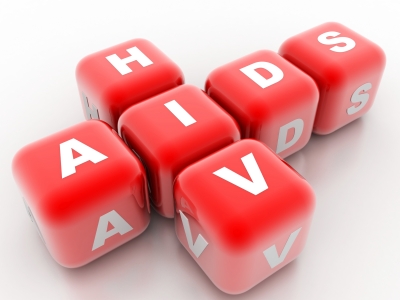
- In 2009, Latinos accounted for 20% of new HIV infections in the United States while representing approximately 16% of the total US population.
- Latino MSM are particularly affected by HIV.
- Group of Latino Friends The HIV epidemic is a serious public health issue in the Latino community.
- In 2009, Latinos accounted for 20% (9,400) of new HIV infections while representing approximately 16% of the total US population.
- The HIV infection rate among Latinos in 2009 was nearly three times as high as that of whites (26.4 vs 9.1 per 100,000 population).
The Numbers
In 2009, Latino men accounted for 79% (7,400) of new infections among all Latinos. The rate of new infections among Latino men was two and a half times as high as that of white men (39.9/100,000 vs. 15.9/100,000).
In 2009, Latino men who have sex with men (MSM)3 accounted for 81% (6,000) of new HIV infections among all Latino men and 20% among all MSM. Among Latino MSM, 45% of new HIV infections occurred in those under age 30.
While Latina women accounted for 21% (2,000) of new infections among Latinos in 2009, their rate of HIV infection was more than four times that of white women (11.8/100,000 vs. 2.6/100,000).
HIV and AIDS Deaths
At some point in life, 1 in 36 Latino men will be , diagnosed with HIV, as will 1 in 106 Latina women.
In 2009, Latinos accounted for 19% of the 42,959 new diagnoses of HIV infection in the 40 states and 5 US dependent areas with long-term confidential name-based HIV infection reporting.
In 2009, an estimated 7,442 Latinos were diagnosed with AIDS in the US and 5 US dependent areas. This number has decreased since 2006.
By the end of 2008, an estimated 111,438 Latinos with an AIDS diagnosis had died in the US and dependent areas. In 2007, HIV was the fourth leading cause of death among Latinos aged 35–44 and the sixth leading cause of death among Latinos aged 25–34 in the US.
Prevention Challenges
A number of factors contribute to the HIV epidemic in Latino communities.
Behavioral risk factors for HIV infection differ by country of birth. Data suggest that the highest percentages of diagnosed HIV infections among Latino men are attributed to sexual contact with other men, regardless of place of birth, but men born in Puerto Rico have a substantially larger percentage of diagnosed HIV infections attributed to injection drug use than Latino men born in other countries.
Latino men and women are most likely to be infected with HIV as a result of sexual contact with men. Latina women may be unaware of their male partner’s risk factors.
Injection drug use continues to be a risk factor for Latinos, particularly those living in Puerto Rico. In addition, both casual and chronic substance users may be more likely to engage in risky sexual behaviors, such as unprotected sex, when they are under the influence of drugs or alcohol.
The presence of certain sexually transmitted infections (STIs) can significantly increase one’s chances of contracting HIV infection. A person who has both HIV infection and certain STIs has a greater chance of infecting others with HIV. The rates of STIs remain high among Latinos.
Cultural factors may affect the risk of HIV infection. Some Latinos may avoid seeking testing, counseling, or treatment if infected out of fear of discrimination, stigmatization or immigration status. Traditional gender roles and the stigma around homosexuality may add to prevention challenges.
Greater acculturation into the US culture has both negative (engaging in behaviors that increase the risk for HIV infection) and positive (communicating with partners about practicing safer sex) effects on the health behaviors of Latinos.
Socioeconomic factors such as poverty, migration patterns, lower educational attainment, inadequate health insurance, limited access to health care or language barriers add to Latino HIV infection rates. These factors may limit Latinos’
Due to fear of disclosure, undocumented immigrants may be less likely to access HIV prevention services, get an HIV test, or receive adequate treatment and care if living with HIV.
